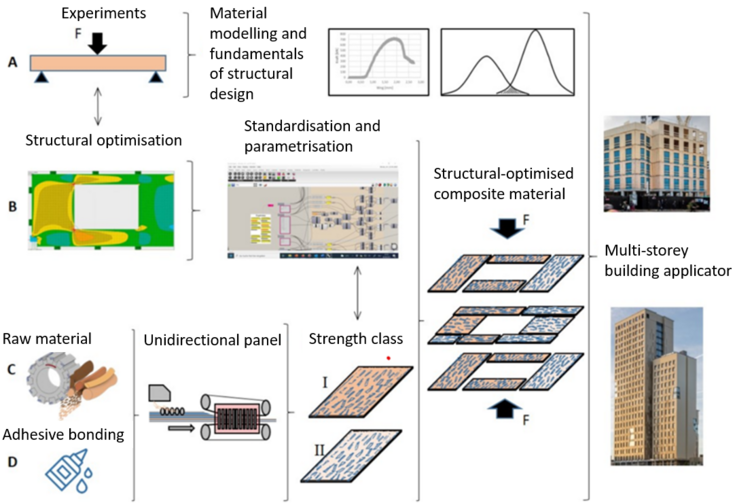Optimised strand and panel adhesion for the production of new wood building products
SUPERVISOR: Johannes KONNERTH
PROJECT ASSIGNED TO: Andrej FASALEK
In recent years, wood has become an increasingly interesting alternative to steel and concrete due to increased environmental awareness and the overall trend towards sustainable construction. Currently, successful timber construction products such as cross-laminated timber (CLT) are predominantly based on softwood timber and have a low raw material yield (30-40 %) due to the involved production processes.
The "UniStrand" project is intended to investigate the technological and design fundamentals for an (approx. 7-20 cm) thick, panel-shaped wood-based material. The panels will be made of strands from different soft- and hardwoods. This enables a high yield of raw material; the aim is to reach 75 %. In the first step, the unidirectional strand boards will be made. Later on, they will be composed into a thicker composite panel with crosswise orientation. The overall vision of the project is to form the basis for large-scale industrial implementation and pave the way for a resource-efficient wood building material of the next generation.
Within the diverse research fields of “UniStrand” (see Figure 1), the main focus of Andrej Fasalek’s project will be the adhesive bonding (Figure 1D) at two specific scales. The bonding properties under different bonding conditions must be researched, evaluated and optimised for strands made of different wood species. Based on this, unidirectional strand boards with different raw materials or raw material mixtures will be produced and comprehensively characterised. The aim is to produce boards of different strength classes on a laboratory scale. In a later project stage these strand based panels will be adhesively bonded to a structural element, representing the second level of interest in adhesive performance. Finally, the possible technological process for the industrial production of structural-optimised composite panels will be developed.

Figure 1: Vision of UniStrand. A: Experimental investigation, material modelling and design approach of multilayer composite elements. B: Structural optimization and parameterization based on selected load cases. C: Basics of strand properties and their influence on the properties of unidirectional plates. D: Basics for bonding strands, unidirectional panels and composite elements.
